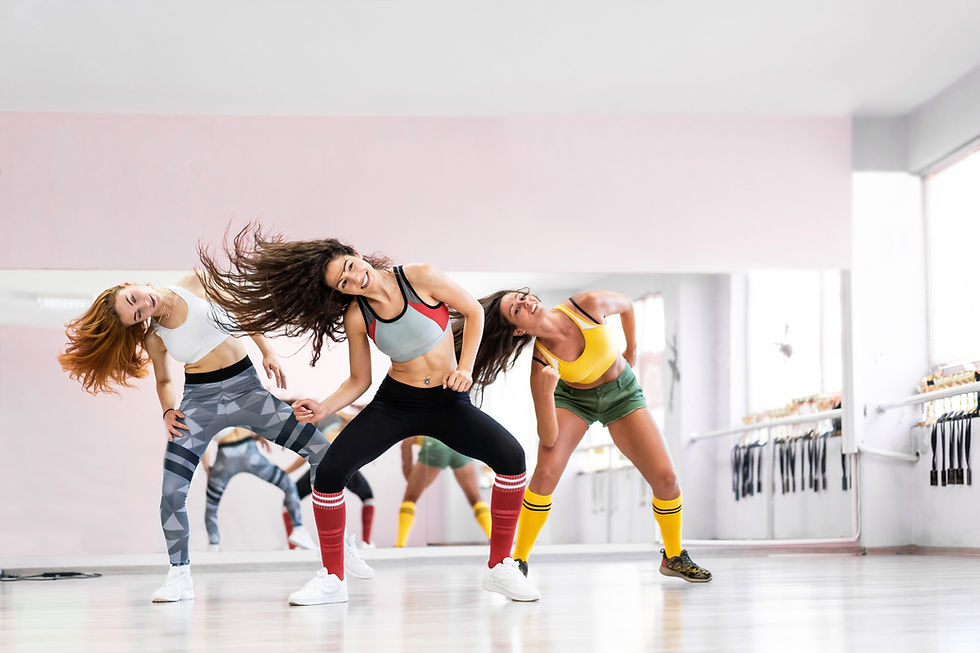- Paul Andrews - CEO Family Business United
- Feb 3
- 4 min read

Dance is one of the most universal and profound forms of human expression. It is a language without words, capable of communicating joy, sorrow, love, and celebration. From the delicate movements of classical ballet to the rhythmic beats of street dance, the beauty of dance lies in its ability to unite the body, mind, and soul in a harmonious flow of movement.
More than just an art form, dance transcends cultural boundaries, connects communities, and allows individuals to explore their emotions and identities. It is a celebration of life, rhythm, and creativity, weaving a tapestry of motion that speaks to the heart.
The Art of Movement
At its core, dance is the art of movement. It transforms the body into an instrument, capable of expressing ideas and emotions that words cannot convey. The grace of a pirouette, the power of a leap, and the precision of synchronized steps all combine to create a visual language that captivates the senses.
Classical dance forms, such as ballet and Bharatanatyam, emphasise discipline, precision, and storytelling, while contemporary and modern styles prioritise freedom, innovation, and individuality. Each style brings its own unique beauty, showcasing the endless possibilities of human movement.
Even in its simplest forms—such as swaying to music or tapping a foot in rhythm—dance reveals an innate connection between the body and the beat. This connection is what makes dance so universally accessible and relatable.

Cultural Diversity in Dance
Dance is deeply embedded in culture, reflecting the traditions, beliefs, and histories of communities around the world. From the flamenco of Spain to the hula of Hawaii, every culture has its own distinctive dance forms, each with its own stories and symbolism.
In Africa, traditional dances are often communal, celebrating milestones, rites of passage, and spiritual connections.
The intricate footwork of Irish step dancing tells tales of resilience and heritage, while the vibrant colours and swirling skirts of Latin American dances like salsa and samba evoke passion and joy.
Cultural dances not only preserve history but also provide a bridge between generations. They are a way of passing down traditions and keeping the spirit of a community alive. The beauty of dance, in this context, lies in its ability to honour the past while remaining dynamic and relevant in the present.
A Universal Language
One of dance’s most remarkable qualities is its universality. It transcends language barriers, allowing people from different backgrounds to connect and communicate. A shared performance or even an impromptu dance circle can bring strangers together, creating a sense of unity and understanding.
Global events like the Olympics, international dance festivals, and viral dance trends highlight how dance can act as a common ground for celebration and collaboration. Shows like Strictly, Dancing With The Stars, So You Think You Can Dance and World of Dance further demonstrate the power of dance to inspire and bring diverse communities together.
The Emotional Power of Dance
Dance is a profound outlet for emotion. Through movement, dancers can channel their feelings and share them with an audience in an intimate and powerful way. A slow, lyrical routine might express heartbreak, while a fast-paced, high-energy performance can radiate exhilaration and confidence.
For many, dancing is a form of therapy. It allows individuals to release pent-up energy, process their emotions, and find solace in rhythm and motion. The act of dancing can also boost mental health by reducing stress and fostering a sense of joy and freedom.
The beauty of dance lies in this emotional depth—it is not just a spectacle to be observed but an experience that resonates deeply with both the performer and the audience.

Dance and the Human Spirit
Dance is often a reflection of the human spirit, celebrating resilience, creativity, and connection. In times of hardship, dance has been a source of comfort and resistance. During the Harlem Renaissance, for example, jazz and swing dances became powerful expressions of identity and pride for African Americans. Similarly, traditional dances in colonized nations often served as acts of cultural preservation and defiance.
On a personal level, dance is a journey of self-discovery. For professional dancers, the pursuit of perfection requires discipline, dedication, and passion. For casual dancers, the joy of moving freely and improvising offers a sense of liberation. In every case, dance allows individuals to explore who they are and how they connect to the world around them.
The Physical Beauty of Dance
The physicality of dance is awe-inspiring. Dancers push the boundaries of what the human body can achieve, combining strength, flexibility, and endurance in ways that seem almost superhuman. A ballerina balancing en pointe, a breakdancer executing a flawless windmill, or a flamenco dancer stomping with precision and intensity—all showcase the incredible capabilities of the human form.
Dance is also a celebration of diversity in movement. Each dancer brings their unique body, style, and interpretation to a performance, creating a richness and authenticity that adds to the art’s beauty.
The Role of Music in Dance
Dance and music are inextricably linked, with rhythm acting as the heartbeat of every performance. Music gives dance its energy, mood, and meaning. The pulsing beats of hip-hop inspire sharp, dynamic movements, while the sweeping melodies of classical music encourage fluid, expressive choreography.
This symbiotic relationship enhances both art forms, creating an immersive experience that engages the senses and stirs the emotions. When music and dance come together, they form a powerful duet that resonates deeply with audiences.

The Timeless Appeal of Dance
Dance is timeless. It has existed for as long as humans have felt the urge to move and express themselves. From ancient rituals and folk dances to modern interpretations and experimental choreography, dance continues to evolve while staying true to its essence as a form of expression.
In today’s digital age, dance has found new platforms, with social media giving rise to viral trends and challenges. These platforms have democratised dance, allowing people of all skill levels to share their creativity and passion with the world.
Dance is a celebration of life, a universal language that connects us to ourselves, each other, and the world around us. Its beauty lies in its ability to communicate what words cannot, to transform the mundane into the extraordinary, and to remind us of our shared humanity.
Whether it is performed on a grand stage or in the privacy of one’s room, dance is a powerful expression of the human spirit.
It is an art form that continues to captivate and inspire, proving that as long as there is rhythm in the world, there will be dance—and with it, beauty.









